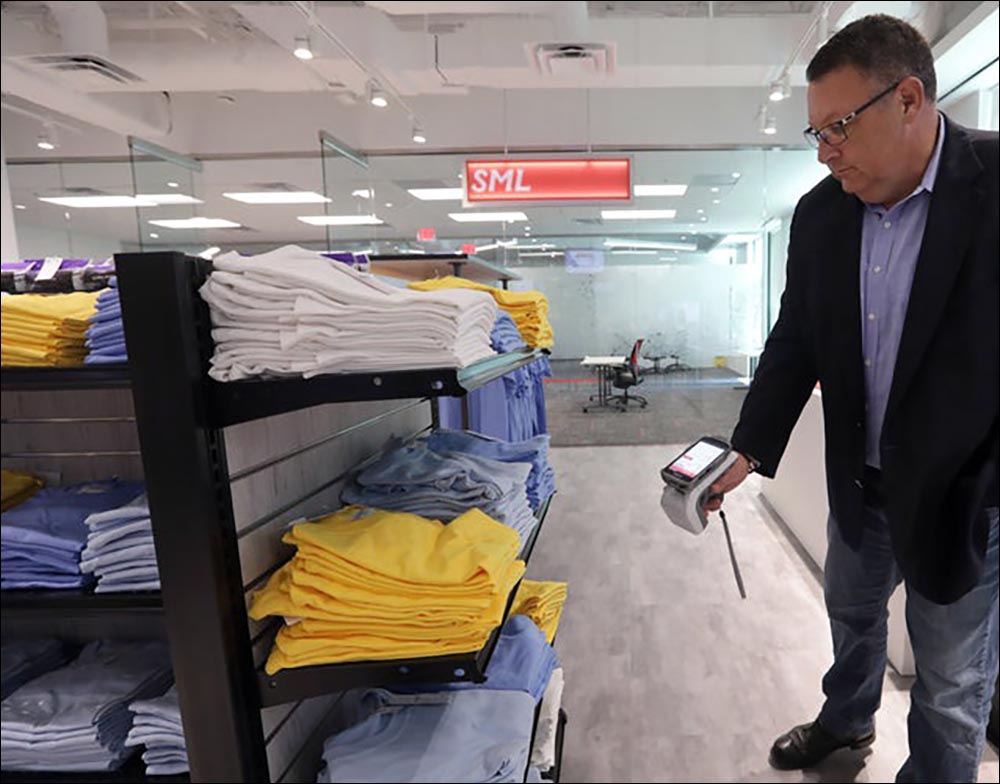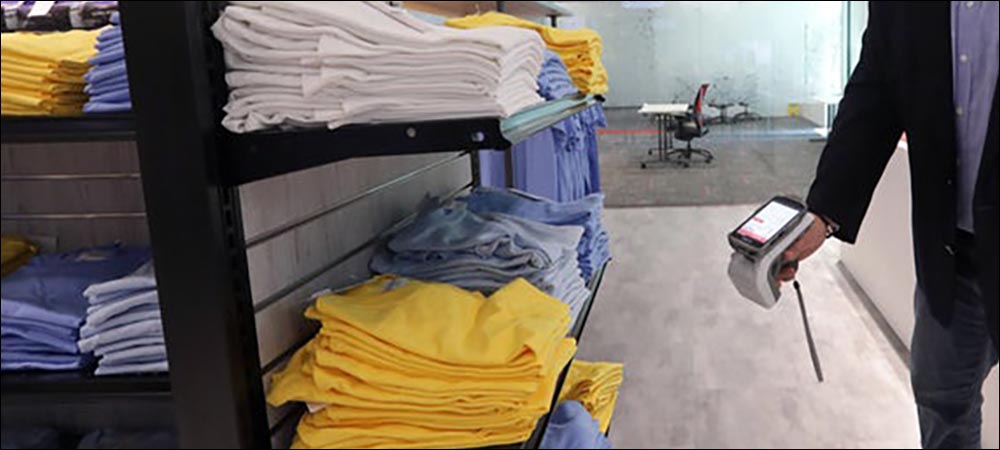As retailers return to a new normal related to serving customers during the pandemic, SML has added four features to its Clarity software intended to make that process easier. The features focus on enabling more efficient picking processes for “buy online, pickup in store” (BOPIS) sales, as well as offering a less labor-intensive way to accomplish markdowns, a store-to-store and store-to-DC transfer tool, and an integrated task-management system to aid workers in locating and managing their tasks at hand via an app.
The technology company had already been in the process of developing or releasing the tools earlier this year, but it accelerated that effort to meet the unique demands retailers face as shoppers return to stores or adjust their buying habits during the COVID-19 pandemic. These features are part of the existing Clarity technology stack, according to Dean Frew, SML’s CTO and senior VP, who adds that the company’s solution is already managing billions of goods in apparel and other markets, and the rate of deployment has been accelerating, before and during the outbreak.

SML’s Dean Frew reads tags on a shelf of stacked clothing.
Since the initial quarantines were at least partially lifted in the spring, Frew says, retailers have had to adjust to unique challenges. For one thing, retailers must adjust inventory that has been accumulating at stores or in the supply chain. But additionally, he notes, purchasing behaviors have changed with an increase in online orders. While there has been a transition toward BOPIS purchasing, that has increased with the pandemic. According to Frew, retailers often serve customers with fewer staff members, due to COVID-19 and the need for social distancing.
The company says it is releasing the tools to help retailers adjust to the changed market. One challenge for retailers has been selling existing inventory while providing goods to buyers who prefer to shop online. While stores have already been seeing the need for BOPIS services, Frew says, “Every retailer that has come out to reopen stores has found the challenges of using their store inventory as replenishment sites,” meaning in-store products are being purchased online.
BOPIS’s success, Frew maintains, is limited by inventory accuracy confidence. “They need a high level of confidence in what they have in their store,” he states, in order to provide those goods for sale online. The software will identify inventory availability and display where those goods are for the retailer, so that workers can most efficiently forward them to the location where a customer needs them. The new tool serves as an app on a handheld terminal, such as a UHF RFID reader, employed by store personnel to locate specific products.
An order is provided via a drop-down on a worker’s device, and the system will display where the products are located in inventory. The handheld can be used to locate each item via RFID tag reads, and to update the inventory status to indicate each item has been picked. Clarity can forward the collected data to the retailer’s online order-management system in order to alert a customer that a product was successfully picked and is ready at a specific site for pickup, or that it has been shipped. Ultimately, Frew says, with more accurate picking, the system minimizes the cancel rate for BOPIS orders—which he says improves customer satisfaction—and the feature offers labor efficiency improvements so that fewer work hours are required to accomplish the picking of products to fulfill such orders.
The second new feature is intelligent markdowns. Currently, Frew reports, the markdown process requires some manual effort, which can be labor-intensive. Typically, markdowns require that sales associates walk around a store viewing merchandise and prices, using a manual pen-and-paper method, then leave the sales floor to create price tickets, often with color codes, to indicate how much each product is being marked down. “The big challenge,” he states, “is managing the list of SKUs to markdown, finding each item and then printing labels while in front of the item.”
Users can view the promotion list in Clarity regarding which items are on sale. The app enables them to find those items and prompts a print job for a specified printer. If the printer is mobile, such as one that is worn on the worker’s belt, then they do not need to leave the rack to create a new price label for attachment to the display.
During the pandemic, Frew reports, “There are a lot of retailers with inventory that is being put on promotion, so the process to do that can be dramatically improved using this new Clarity feature.” The company launched this feature four years ago, he says, but it has made the process easier to allow for 100 percent labor savings. One company is already using this feature, Frew notes, adding, “You can’t measure the inaccuracy of doing it by hand.” The Clarity system, he notes, provides pricing at about 95 percent accuracy.
A third new feature includes store-to-store and store-to-DC transfer functionality, to enable an easier process of selecting and identifying items that must be transferred from one site to another, and to allow those performing that picking process to locate the requested items and update their status while preparing them for shipping to the proper location. As with BOPIS orders, store-to-store processes have accelerated during the pandemic. In some cases, Frew says, the labor at DCs or at stores is limited, in part due to the need for social distancing or continued quarantines. “No one could have predicted things such as closing of warehouses due to COVID-19 outbreaks and labor shortages regionally,” Frew explains.
With the new store-to-store or DC-to-store feature, workers at warehouses or stores can use the app to view what needs to be transferred form one site to another, identify each item with the handheld, pick and set aside products, read the RFID tags and change the status of each item as “in-transit” via the device. “Anything they can do to help stretch the available labor is a useful thing—doing more with less,” Frew says. “Technology is helping that happen on top of the inventory-management benefits.”
The final new features is integrated task management. Store employees have a variety of tasks they need to organize, and are increasingly using RFID for such applications as inventory counting at one store department, marking down prices in another or picking goods for online sales. The new SML tool, as part of Clarity, enables managers or a central system to set up a list of tasks for employees so the workers will see everything on the task-management screen, such as “children’s wear stock count,” and then mark the task as completed when finished. Staff members can use the handheld reader to locate items and check off completed tasks, thereby more efficiently accomplishing their work.
All four features were under development before the COVID-19 outbreak, Frew says, but the company accelerated its efforts to better face the pandemic challenges. The features are being offered both for existing SML RFID customers and for new customers coming to the table, he adds, who need help enabling BOPIS and inventory management during the pandemic.
SML has deployed its Clarity solution at more than 1,000 stores since the outbreak began. According to Frew, the company is on track to deploy the solution to more stores than ever in a single year. “Adoption is doing nothing but increasing,” he states. The question is going to be which retailers survive the pandemic and the increase in online purchasing, and which will focus on technology as part of their success. “What we’re witnessing is a lot of retailers saying they’ve got to dramatically improve in-store inventory accuracy.” Beyond apparel and footwear, some of SML’s customers are in quick-serve restaurants and pharmaceuticals, mostly in North America and Europe.


